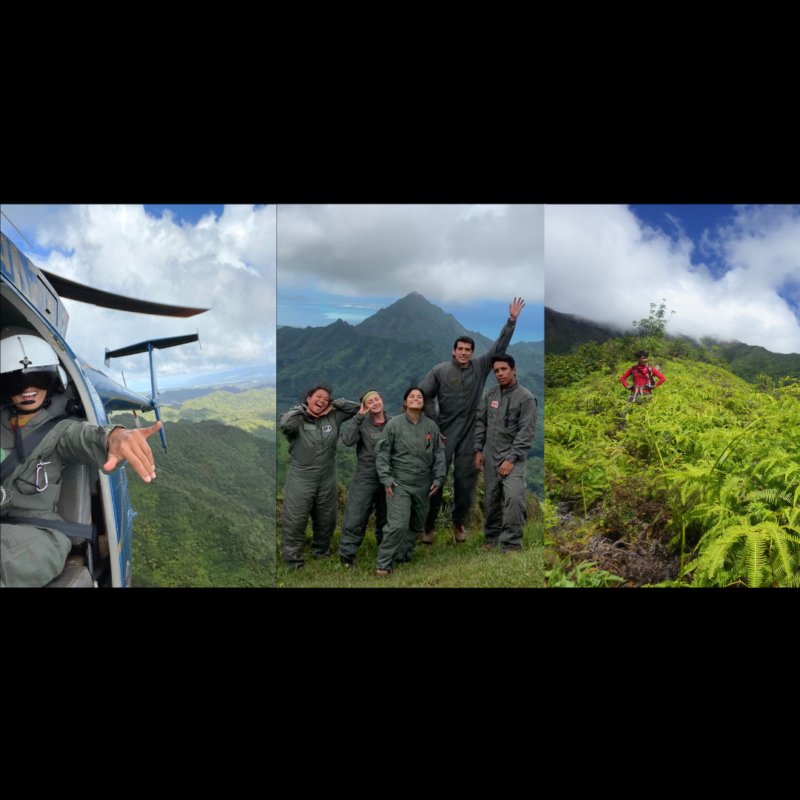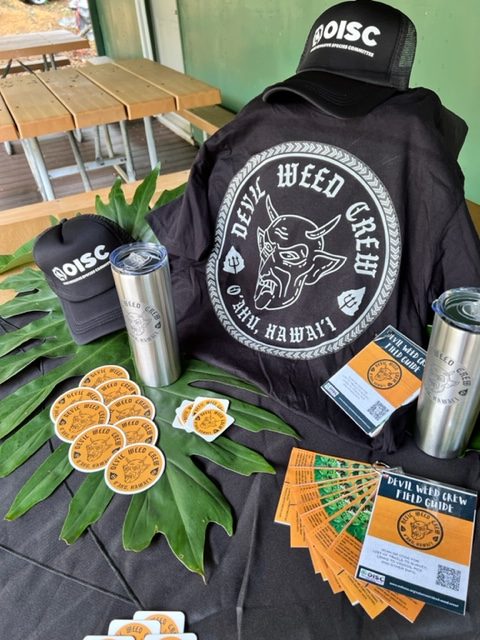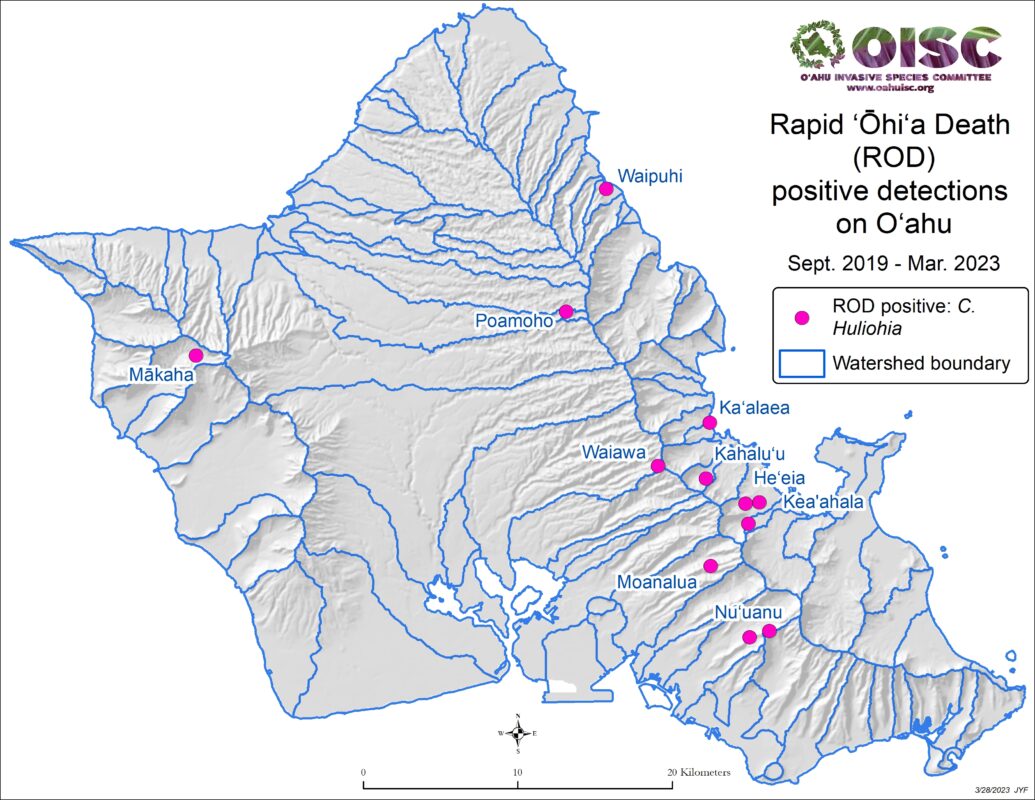OISC is hiring (2) field crew positions!
Home Slider
DEVIL WEED CREW CHALLENGE 2024
SWAG BY THE MILE! Survey and get free swag! T-shirts, tumblers and more!
ROD ON OʻAHU
Keep up-to-date about ROD on Oahu and learn what you can do to stop ROD from spreading.
OISC Outreach & Education
Need a guest speaker for your meeting or classroom? Are you a parent or teacher looking for resources for your students? We have it here!
ARE YOU GETTING BITTEN OR STUNG IN YOUR YARD?
SEVERAL LITTLE FIRE ANTS INFESTATIONS CURRENTLY UNDERGOING TREATMENT ON OAHU.
FOURTH DETECTION OF RAPID ʻŌHIʻA DEATH ON O‘AHU
Less Aggressive Fungus Found in State Forest Reserve






